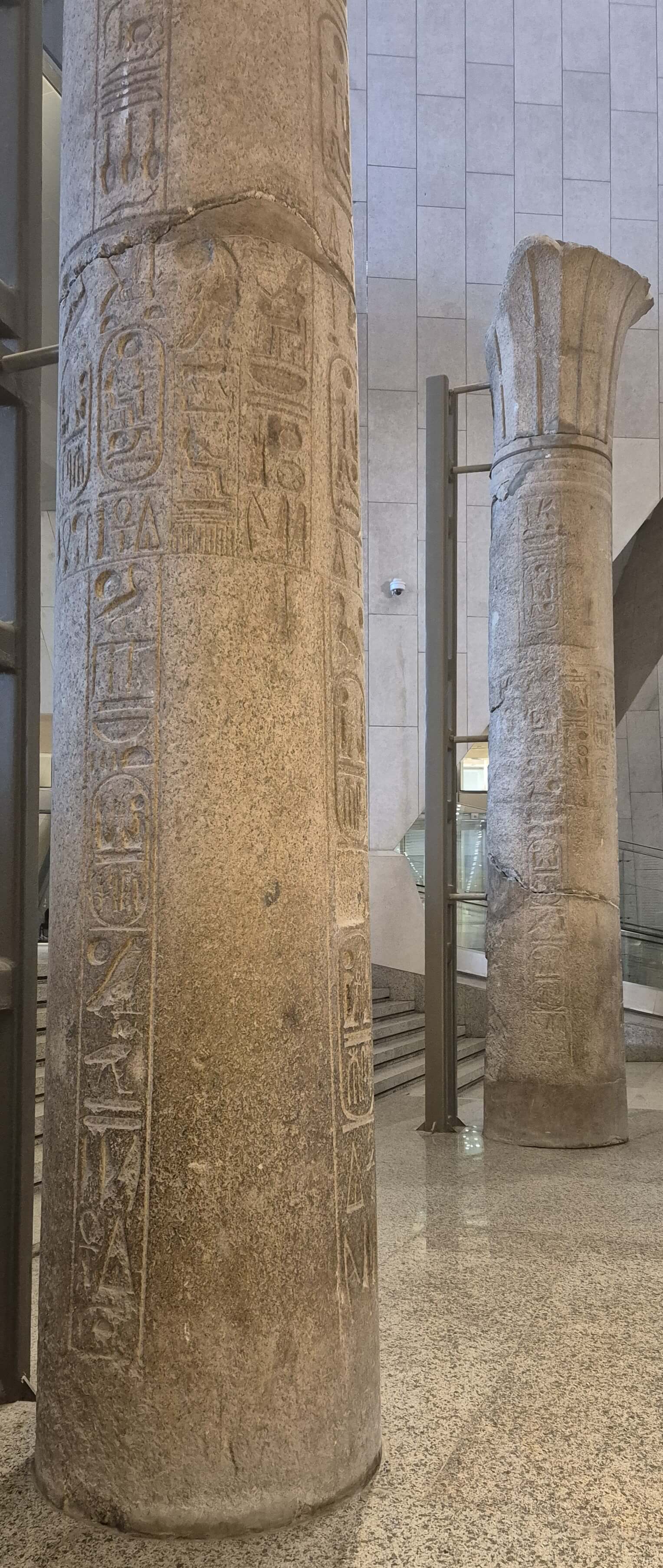
GEM 6768
Pair of Palm Columns
This Pair of Palm Columns tells a fascinating story of architectural reuse and dynastic continuity in ancient Egypt. The columns themselves originally date back to the Old Kingdom, though their exact first context remains unknown. Centuries later, they were repurposed during the New Kingdom, specifically under the reign of Ramesses II (1279–1213 BCE) of the 19th Dynasty, one of Egypt’s most powerful and prolific builders.
These columns were reused in the Temple of the War Goddess Anat at Per-Ramesses, Ramesses II’s grand capital in the Nile Delta. The palm capital—a stylized representation of palm fronds—is both decorative and deeply symbolic. In Egyptian c ... Узнайте больше с Премиум!
Разблокируйте полную историю этого артефактаПерейдите на Премиум, чтобы получить полный доступ к описанию, аудиогидам и эксклюзивному контенту для всех артефактов.Получите полный доступ к аудио и описанию главных экспонатов ГЕМ за 1.99$
Ищете другой артефакт?